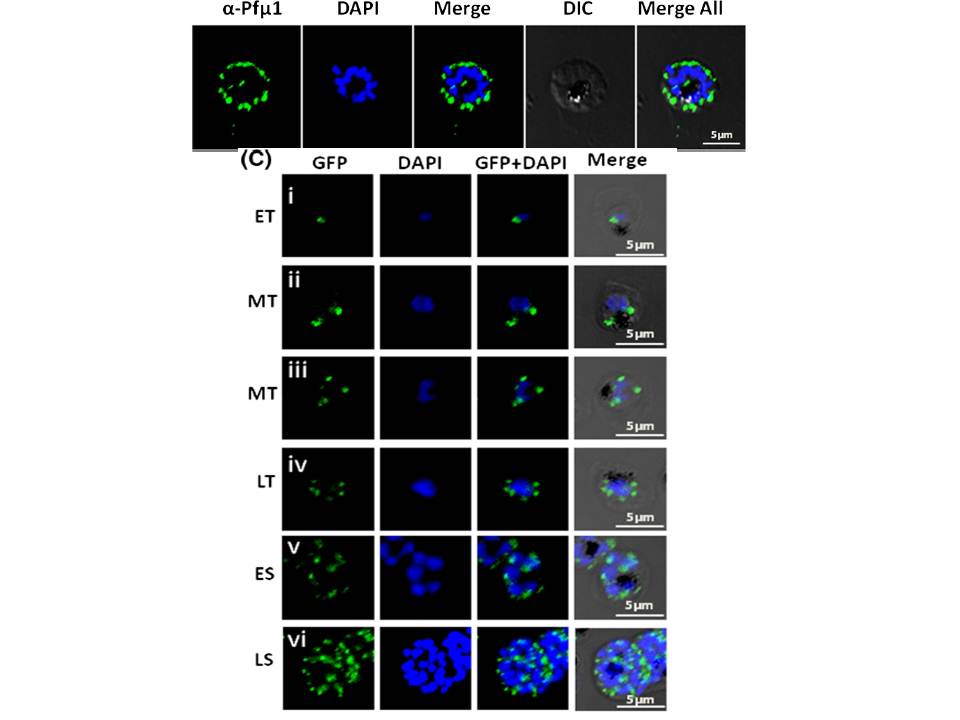Up: Expression and localization of Pfμ1 protein in P. falciparum. Immunofluorescence analysis using the anti-Pfμ1 antibody, demonstrating discreet punctate structures in schizont stage parasites. Parasite nuclei were stained with DAPI; scale bars denote 5 μm. The well-defined punctate structures in schizont stage of the parasite, a pattern characteristic of staining for apical secretory organelles. Lower panel: Live cell imaging of transgenic parasites expressing the Pfμ1–GFP fusion protein fromearly trophozoite to late schizont stages. Parasite nuclei were stained with DAPI; scale bars denote 5 μM. ET, Early Trophozoite; MT, Mid Trophozoite; LT, Late Trophozoite; ES, Early Schizont; LS, Late Schizont. 10–18 h postinvasion, Pfμ1–GFP was observed as a single spot in a small compartment in close proximity to the nucleus (i). After further development, in young trophozoite stages (20–24 h post invasion), two to four fluorescent puncta were observed adjacent to the nucleus (ii–iv). As nuclear division commences (~32 h post invasion), Pfμ1–GFP was localized in multiple compartments, ensuring that each merozoite inherits one such spot (v). At the mature schizont stage, a welldefined punctate staining was seen, typical of apical organelle distribution of proteins in Plasmodium (vi).
Kaderi Kibria KM, Rawat K, Klinger CM, Datta G, Panchal M, Singh S, Iyer GR, Kaur I, Sharma V, Dacks JB, Mohmmed A, Malhotra P. A role for adaptor protein complex 1 in protein targeting to rhoptry organelles in Plasmodium falciparum. Biochim Biophys Acta. 2015 1853(3):699-710.
